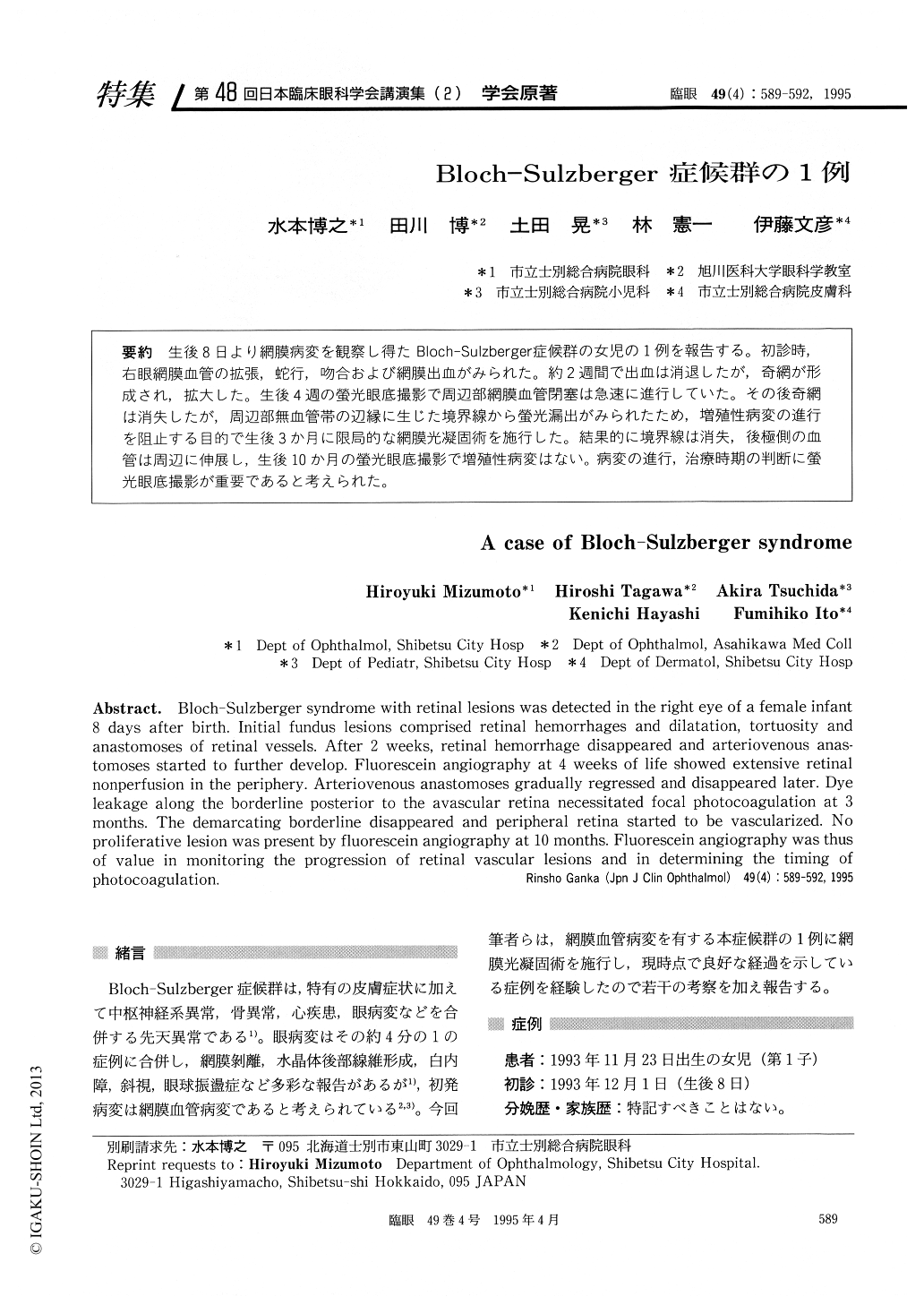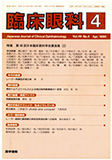Japanese
English
- 有料閲覧
- Abstract 文献概要
- 1ページ目 Look Inside
生後8日より網膜病変を観察し得たBloch-Sulzberger症候群の女児の1例を報告する。初診時右眼網膜血管の拡張,蛇行,吻合および網膜出血がみられた。約2週間で出血は消退したが,奇網が形成され,拡大した。生後4週の螢光眼底撮影で周辺部網膜血管閉塞は急速に進行していた。その後奇網は消失したが,周辺部無血管帯の辺縁に生じた境界線から螢光漏出がみられたため,増殖性病変の進行を阻止する目的で生後3か月に限局的な網膜光凝固術を施行した。結果的に境界線は消失,後極側の血管は周辺に伸展し,生後10か月の螢光眼底撮影で増殖性病変はない。病変の進行,治療時期の判断に螢光眼底撮影が重要であると考えられた。
Bloch-Sulzberger syndrome with retinal lesions was detected in the right eye of a female infant 8 days after birth. Initial fundus lesions comprised retinal hemorrhages and dilatation, tortuosity and anastomoses of retinal vessels. After 2 weeks, retinal hemorrhage disappeared and arteriovenous anas-tomoses started to further develop. Fluorescein angiography at 4 weeks of life showed extensive retinal nonperfusion in the periphery. Arteriovenous anastomoses gradually regressed and disappeared later. Dye leakage along the borderline posterior to the avascular retina necessitated focal photocoagulation at 3 months. The demarcating borderline disappeared and peripheral retina started to be vascularized. No proliferative lesion was present by fluorescein angiography at 10 months. Fluorescein angiography was thus of value in monitoring the progression of retinal vascular lesions and in determining the timing of photocoagulation.

Copyright © 1995, Igaku-Shoin Ltd. All rights reserved.


